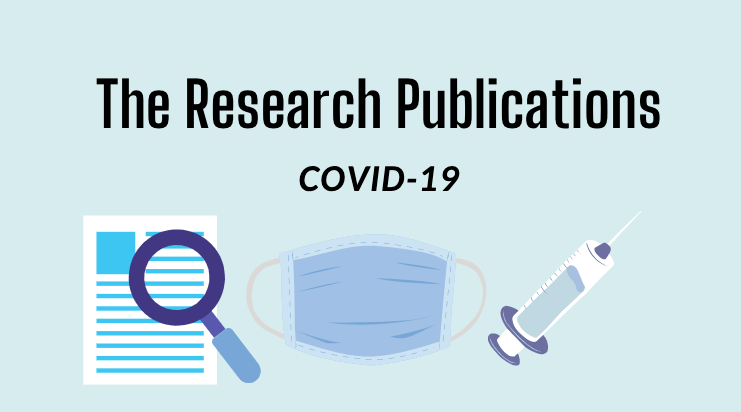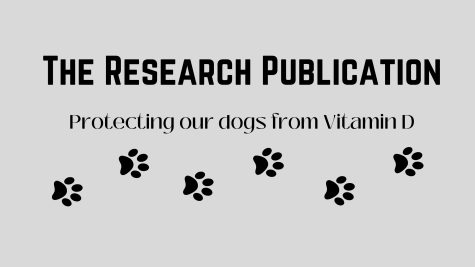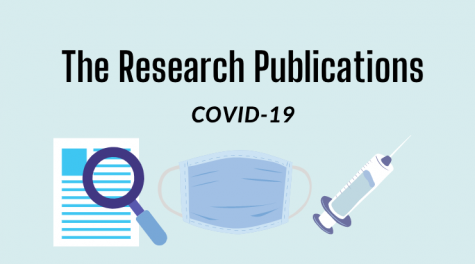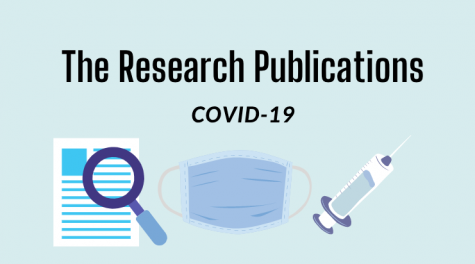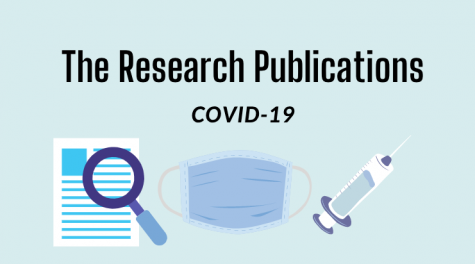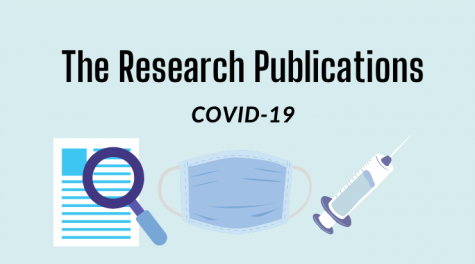The Effect of COVID-19 on the Environment
The PV Student Publication has partnered with The Research Club to publish a series of research essays entitled “The Research Publications.” This essay explains the impact the pandemic has had on the environment.
(Editor’s Note: The PV Student Publication has partnered with The Research Club to publish a series of research essays related to topics of COVID-19. All research essays are written and fact-checked by members of the Research Club, and The PV Student Publication is rolling out these essays as a service to our community. This essay explains the impact the pandemic has had on the environment. This essay is written by senior Bridget Coyle, fact-checked by senior Jared Shiffman, and edited by senior Elise Schicker).
The global outbreak of coronavirus disease has had positive and negative impacts on the environment. Safety restrictions, including border closures, reductions in public transport and non-essential services, and shelter-in-place orders, were established in attempts to slow the spread of the virus[8]. Ultimately, these factors of the pandemic have had impacts on the environment in different areas around the world.
Key positive impacts of the coronavirus pandemic include reductions in water, air, and noise pollution. Water pollution occurs in areas around the world when substances contaminate bodies of water. In India, industrial waste is thrown into rivers without proper treatment, which results in polluted water. However, in the lockdown period of COVID-19, the Ganga River in India reached a 40-50% improvement in water quality due to a decline in production of the major industrial sources [1] [7]. Moreover, the snowmelt supply from the Indus River Basin in India provides water for about 300 million people[5]. Studies from the Earth Research Institute of California discovered that the snow and ice were cleaner by about 36 parts per million after the lockdown period [5]. Similarly in New York City, fewer commuters traveling in and out of the city led to fewer pollutants ending up in the Hudson River [2]. Studies from NASA Goddard Space Flight Center detected a considerable decrease in sewage discharge in bodies of water in the Manhattan area [5]. As a result of the water becoming cleaner in Venice, aquatic life is now becoming more visible and species are going back to their natural habitats[7].
Furthermore, a reduction in air pollution is another indirect impact of COVID-19. To preface, particulate matter (PM2.5 and PM10) is an indicator of air quality, as it is a pollutant, stemming from emission from industries, power plants, etc. [4] According to the World Air Quality report, the world’s most polluted city, Ghaziabad, had a PM2.5 pollution level of 110.2 μg/m3 in 2019 compared to the limit of 60 μg/m3. The lack of activity during the COVID-19 lockdown generated decreased PM2.5 pollutant levels in Ghaziabad, India. In an NCBI study, PM2.5 and PM10 concentrations decreased according to satellite images from March 20th, 2020 to April 12, 2020, in northeastern states of India, including the capital, New Delhi [4]. Moreover, nitrogen dioxide (NO2) emission is also an air pollution indicator, as it comes from vehicular exhaust, power plants, industries, etc[4]. The COVID-19 lockdown in India brought about a major reduction in NO2 levels emitted into the atmosphere. As reported by the European Space Agency, there was a 40–50% drop in the NO2 concentrations in the atmosphere from April 2020 compared to 2019 across several cities in India[4]. On a larger scale, according to the World Health Organization, the concentration of NO2 in the atmosphere decreased from 5.6 µg/m3 to 0.2 µg/m3 in several cities around the world [7]. Carbon dioxide emission, which causes climate change, has also been diminished due to the COVID-19 shutdowns. From the beginning of the lockdown in China, CO2 emissions decreased by 200 million metric tons and scientists observed a 5-10% reduction in emissions in the span of one week in Italy [7]. According to National Geographic, daily global carbon emissions dropped by 17% in early April 2020 due to worldwide shutdowns.
Noise pollution is another positive impact of COVID-19, as decreased noise levels are more favorable to humans and aquatic organisms. In general, sound travels faster and farther in water, meaning that aquatic life is more susceptible to the adverse effects of noise pollution [7]. Quarantine and reduced economic activities caused noise levels to significantly reduce in several areas around the world. According to an NCBI study, noise levels in Delhi, India decreased by about 40-50% in the shutdown period [1]. Furthermore, a marine ecologist at Cornell, Michelle Fournette, stated that the simple removal of cruise ships would dramatically change the amount of ocean noise [7]. With transportation and travel stalled in the midst of the pandemic, it can be hypothesized that the reduction in noise is having positive effects on aquatic life.
On the other hand, COVID-19 has also brought about negative effects on the environment. To stop the spread of the virus, there was a sudden surge in the use and production of personal protective equipment (PPE), including masks, gloves, gowns, hand sanitizers, and disinfectants, which directly increased the amount of medical waste worldwide. At the beginning of the pandemic, Wuhan, China produced over 240 metric tons of medical waste every day [1]. To protect from coronavirus, people are using face masks and gloves, thus increasing the production of plastic-based PPE worldwide. China increased the production of medical face masks, reaching 14.8 million per day since February 2020 [1]. Additionally, the extensive use and improper deposition of disinfectants have the potential to kill species and create an ecological imbalance [1]. Due to restrictions, COVID-19 increased the consumption of single-use plastic products. For example, food delivery services exclusively use single-use plastic containers and coffee chains stopped allowing refillable cups, forcing customers to buy disposable cups instead [3].
Ultimately, COVID-19 has imposed positive and negative effects on the environment. Unfortunately, the majority of the positive effects are only temporary because once life goes back to normal, the environment will revert back to normal as well.

